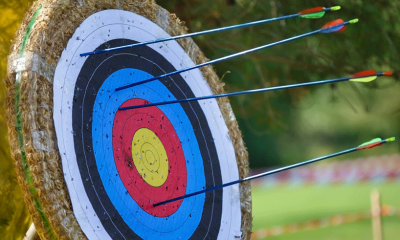Morality Part 2: Mercy, Motivation, and Conscience
In Morality Part 1, I explained how morality was about relationship, not rules. Part 2 will begin to explore moral responsibility and the role of conscience. But first, a word about mercy.

Why? There was no good reason. I wasn’t distracted or stressed. I have no one to blame but myself. I literally hung my head in shame as I showed my husband what I had done. Worse yet, I misread the text message that my friend sent. She hadn’t asked me to pick her up; she had offered to pick me up.

My husband was more merciful and compassionate to me that I was to myself. “Try not to do that again,” he said as he hugged me. He knew I was sorry.
As I tried to moved beyond self-condemnation to being present to the rest of my day (and of course figuring out the details of getting the car fixed) I thought a lot about my own practice of showing mercy, especially with my kids.
I find that my ability to show mercy is directly related to the person’s ability to take responsibility. We all make mistakes; I sure as heck do.
I get really upset with my kids when they fail to acknowledge whatever wrong they have done – whether it’s due to ignorance, indifference, lying, or blaming. But the times in which they come to me with honest remorse over something, I respond with mercy, compassion, and love – at least I try to.

When we talk about Moral Responsibility in the context of our relationship with God, it is important to remember God’s mercy endures forever (Psalm 136:25). Every person in Scripture that approaches Jesus having taken responsibility for their sins is granted mercy and forgiveness.
- Think about your own practice of mercy. How well do you practice – or how much do you struggle with practicing – mercy? Do you find it harder to be merciful with yourself or others?
The “Why” Matters
Part 1 explained that morality is about relationships.
Yes, morality is about the interpersonal “how we treat others” (the Golden Rule–do unto others, for sure), but it’s so much more than just external behavior. In Mere Christianity, C. S. Lewis explains that focusing exclusively on how we treat others leads us to thinking that so long as we do the right thing, it doesn’t matter much why we do it. On the contrary, it’s that internal motivation–the personal dimension–that reflects the quality of our character. And God is quite concerned with the quality of our character.
When the Catechism defines Morality in CCC, 1750, it speaks of three “Sources” to be examined and evaluated. The morality of human acts depends on:
- Object – WHAT – the action itself
- Intention – WHY – the motivation or reason why the action was done
- Circumstances – WHO, WHEN, WHERE, HOW – the context, all the contributing factors, as well as the consequences or outcome of the act
All three–object, intent, and circumstances–are examined when we evaluate whether an act is good or bad, and all three must be aligned with what is good for the act to be evaluated as moral. It comes as no surprise that there are some acts (like terrorists murdering innocent people) that are objectively evil. But things get more complicated when people do good things for the wrong reasons. Or worse, do something wrong so as to achieve some “greater good.”
The circumstances surrounding an act can contribute to increasing or diminishing the goodness or evil the act (for example, how much is stolen in a theft; how much damage is done). Circumstances can also increase or diminish the person’s responsibility (such as acting out of fear or under stress). However, circumstances themselves cannot change the moral quality of an action; they simply can not make an evil act good. (See CCC, 1756)
The Catechism is abundantly clear on explaining that it is never morally permissible to do evil to achieve good. “The ends does not justify the means” (CCC, 1759).
- Can you think of an example from your own life when you…
- …did the right thing for the wrong reason?
- …did the wrong thing to achieve some greater good?
Conscience
So we know morality is about relationships, not rules. And we know we need to consider the object, intent, and circumstances of an act when we evaluate whether or not it is good. But how we decide what to do is a matter of conscience. In fact, in all we say and do, we are obligated to follow our conscience. (CCC, 1778).
Conscience: here’s another aspect of Catholic tradition that is deeply misunderstood. We talk about conscience being the “voice within” (CCC, 1776) and people either think of miniature angels and devils sitting on our shoulders or “hearing voices” akin to Jiminy Cricket in Disney’s Pinocchio.
A more helpful explanation of conscience sees it as both:
- The inner desire for goodness
- Choosing to do the right action
Yes, we are obligated to follow our conscience, but conscience is not what modern psychology calls our “superego.”
Superego is the voice of some external authority that says “I should do this because I’m supposed to.” Conscience is when we genuinely say, “I desire what is good, and I choose to do what is right.” When you hear the voice of your mother in your head telling to send that thank-you-note or spend time visiting that obnoxious aunt, that is not your conscience; that is your superego.
As the mother of two boys who are 6 and 7 /2 years old, I must emphasize that superego has its place in helping us to form our conscience, but it cannot be mistaken for conscience. There are a variety of reasons why people do what is right.
Lawrence Kohlberg (1927-1987) was an American psychologist that developed the theory known as the Stages of Moral Development. There are different, age appropriate reasons why people choose to do what is right.
Kohlberg explained that there are six stages of moral reasoning, which describe the different motivations people have for doing what is right. Those in the first stage, Obedience and Punishment, do what is right simply to avoid punishment. In the second stage, Individualism and Exchange, the rationale is self-centered and reward seeking. Those in the third stage, Good Boy/Girl, are motivated by making a positive impression on people who matter to them. In the fourth stage, Law and Order, the motivation is centered on following the rules. Kohlberg says that most adults make their moral decisions in stages three and four. Few people attain the fifth stage, Social Contract, whereby people consider the common good when deciding. Even fewer reach the sixth stage, Principled Conscience. It is in this stage which people choose to do what is right simply because it is the right thing to do.
- As you consider Kohlberg’s Stages for Moral Development, where would you place yourself? Why do you find yourself doing what is right?
- What insight do you gain from thinking about Morality having Stages of Development? Why is this significant to you?
Next up, in Part 3: How we Form and Inform our Conscience–and how does that impact our sense of Moral Responsibility.
“Right or wrong © Depositphotos.com/stevanovicigor”









I loved part two on Morality. It did cause me to reflect as to why I choose what I did and I would like to think I am at or near stage six.